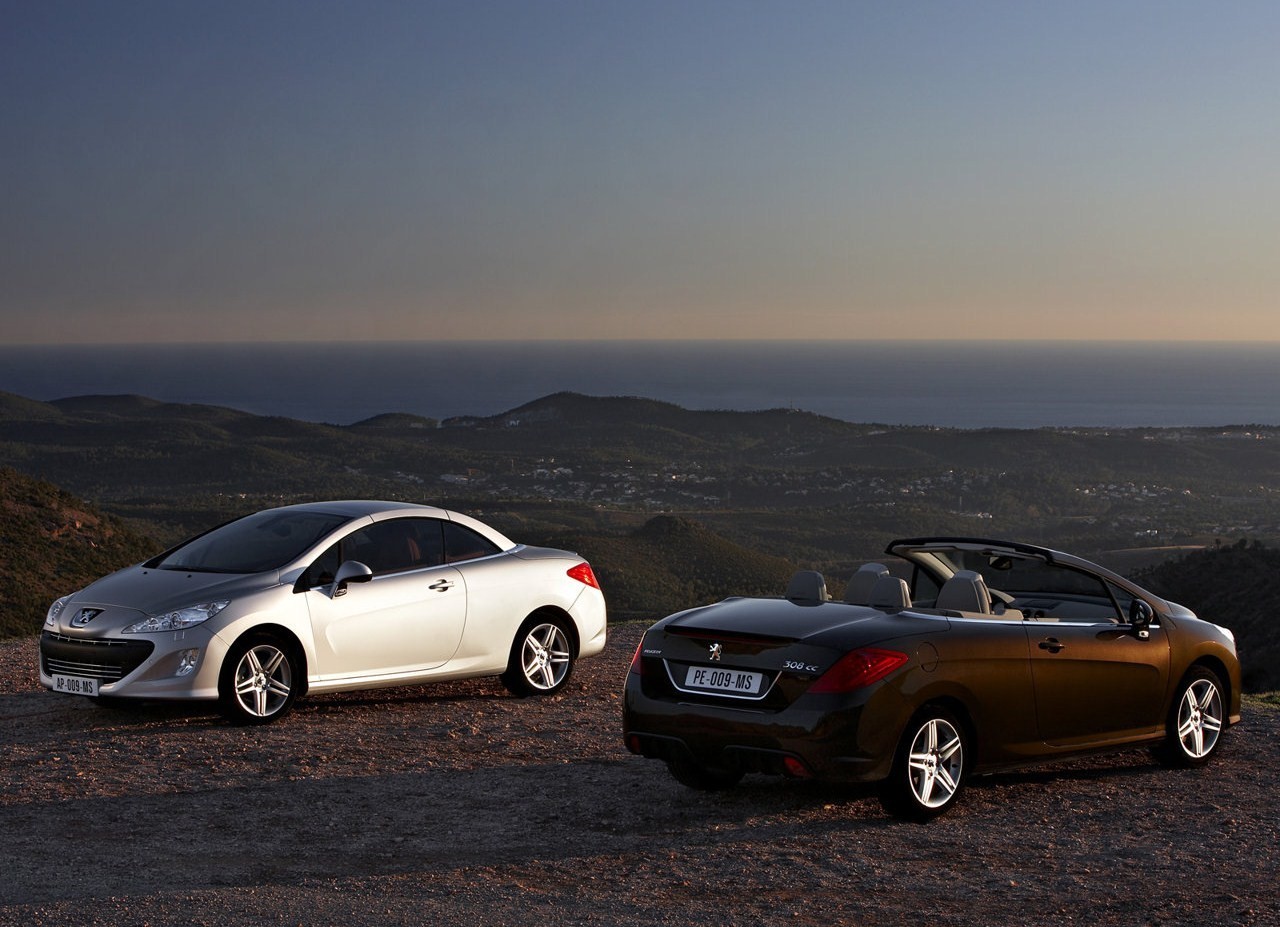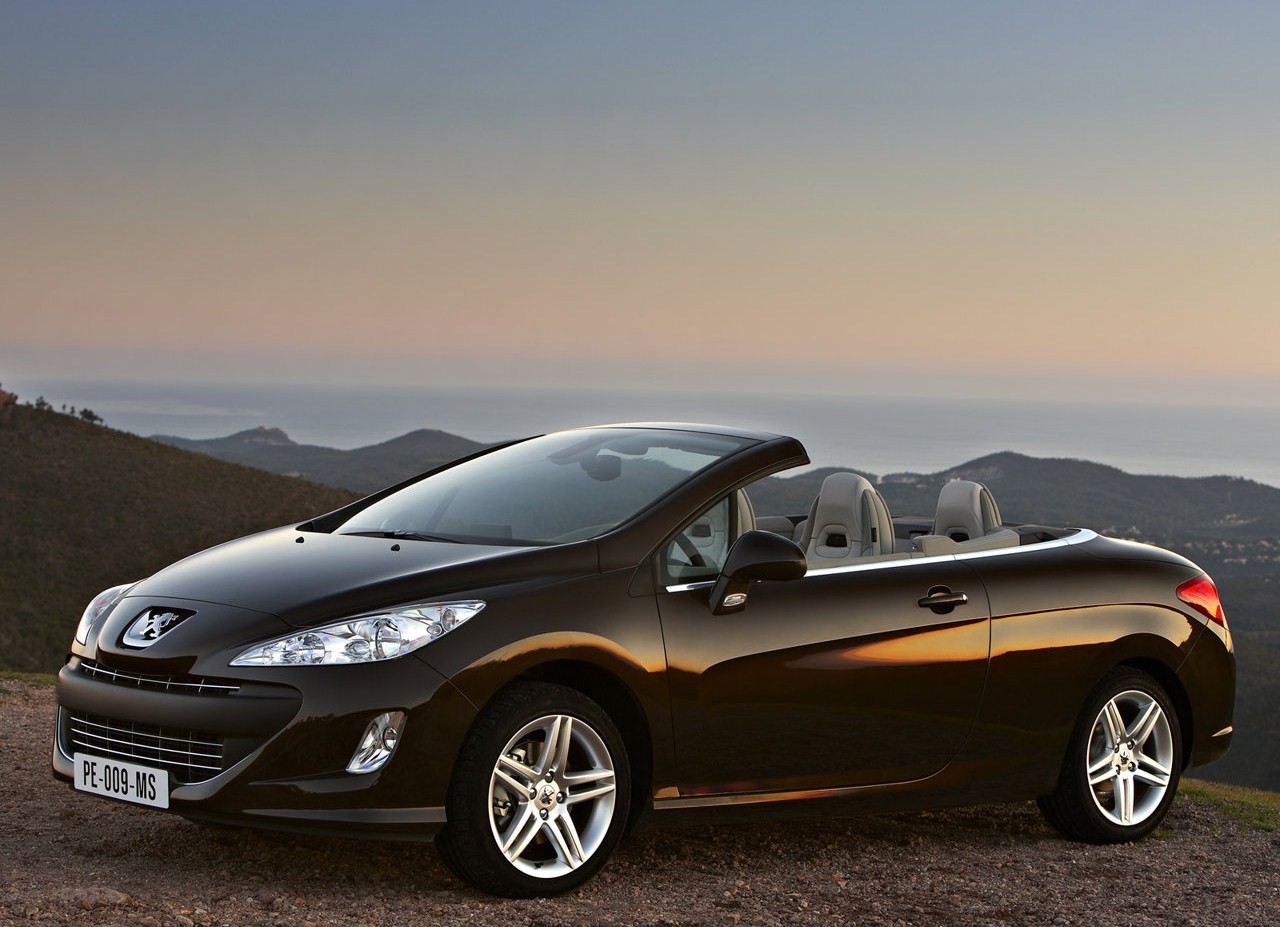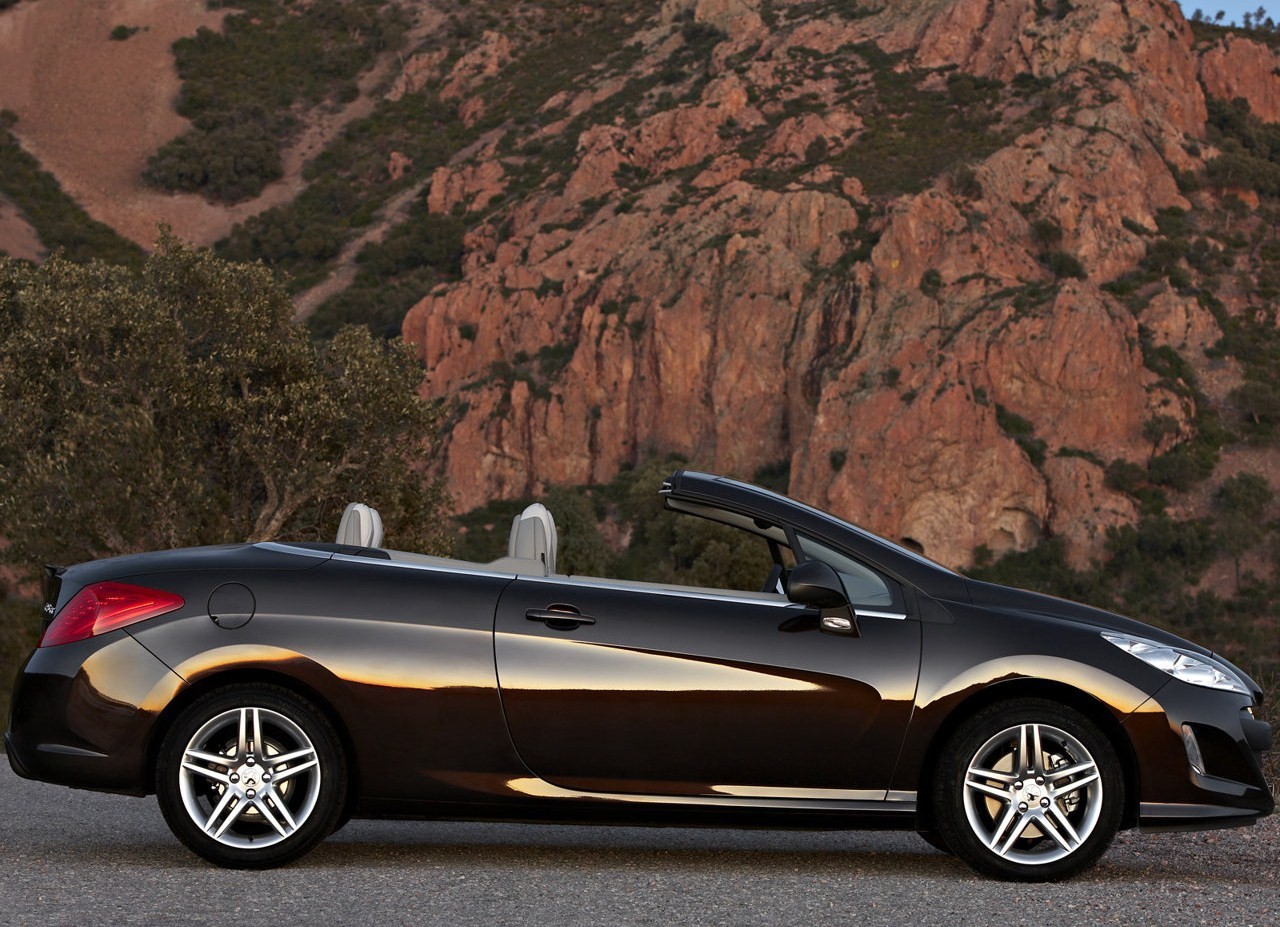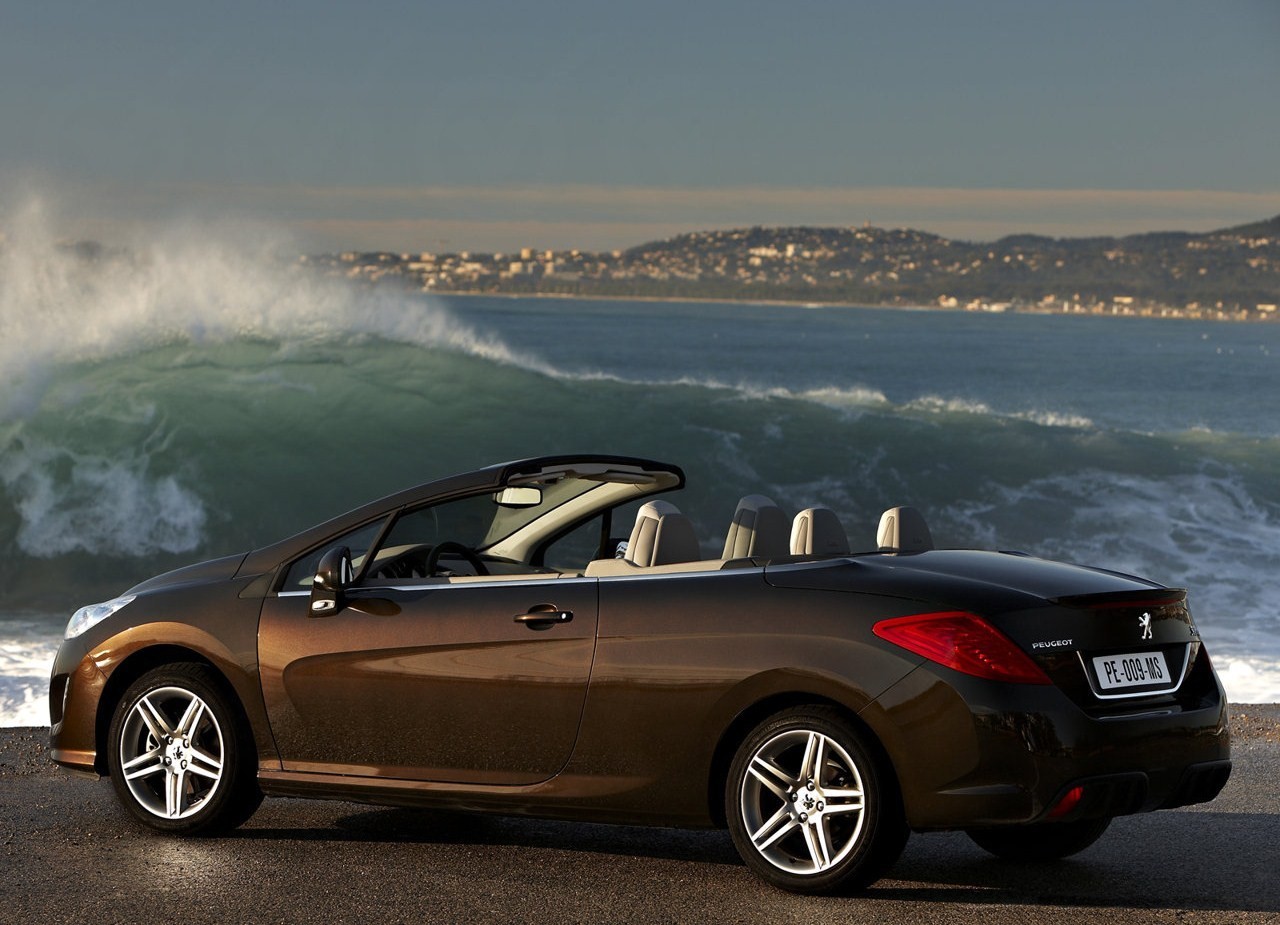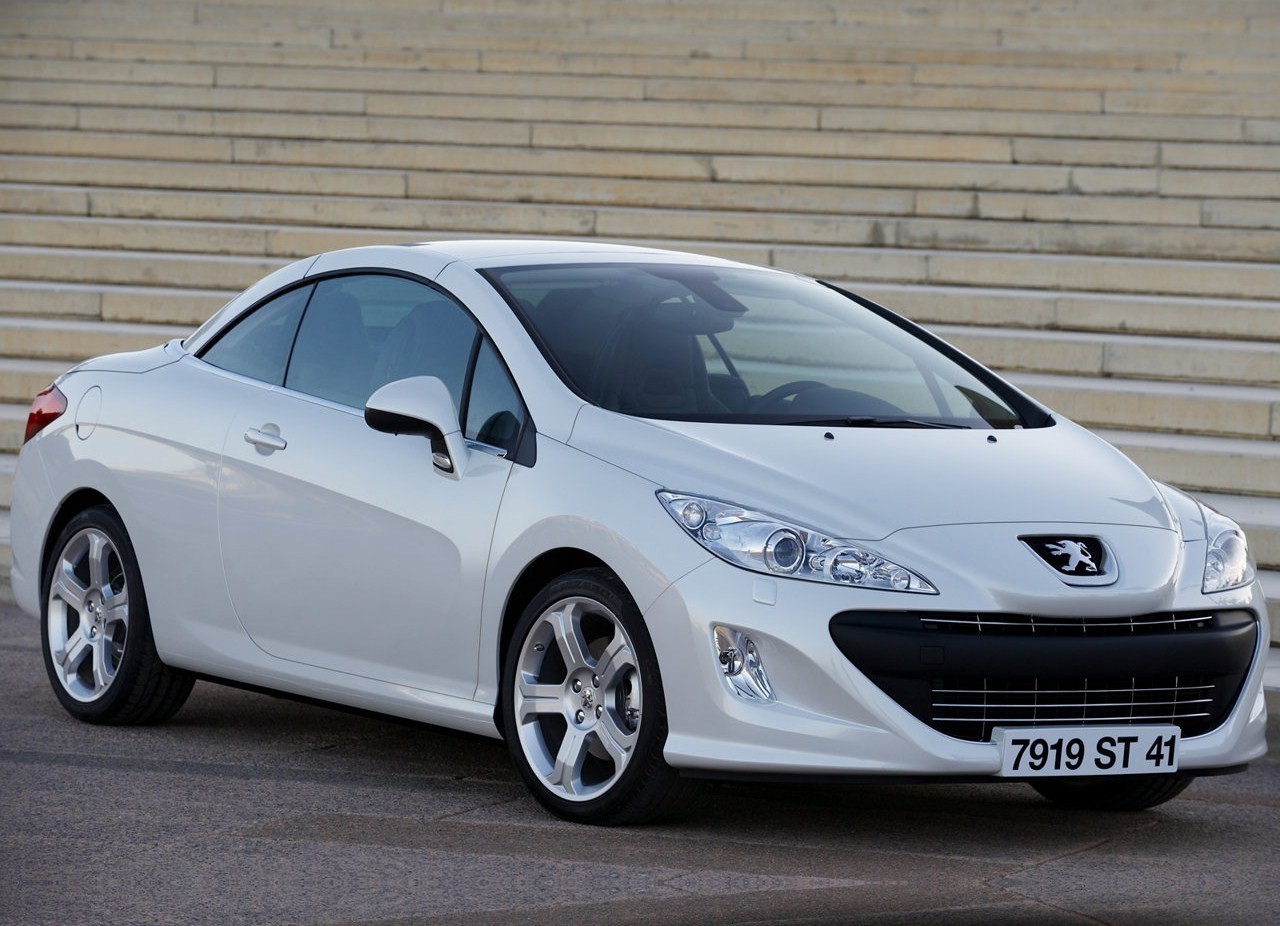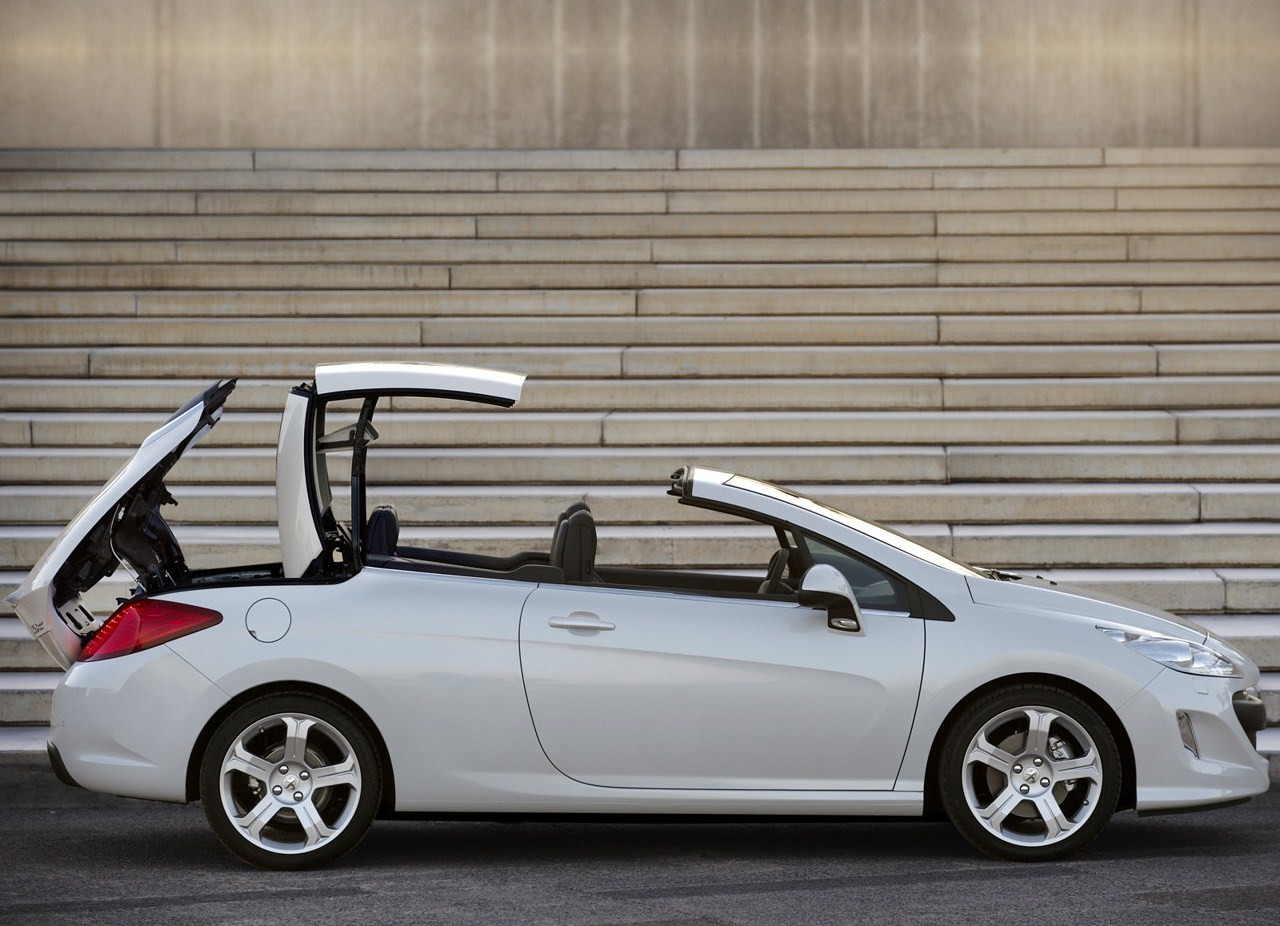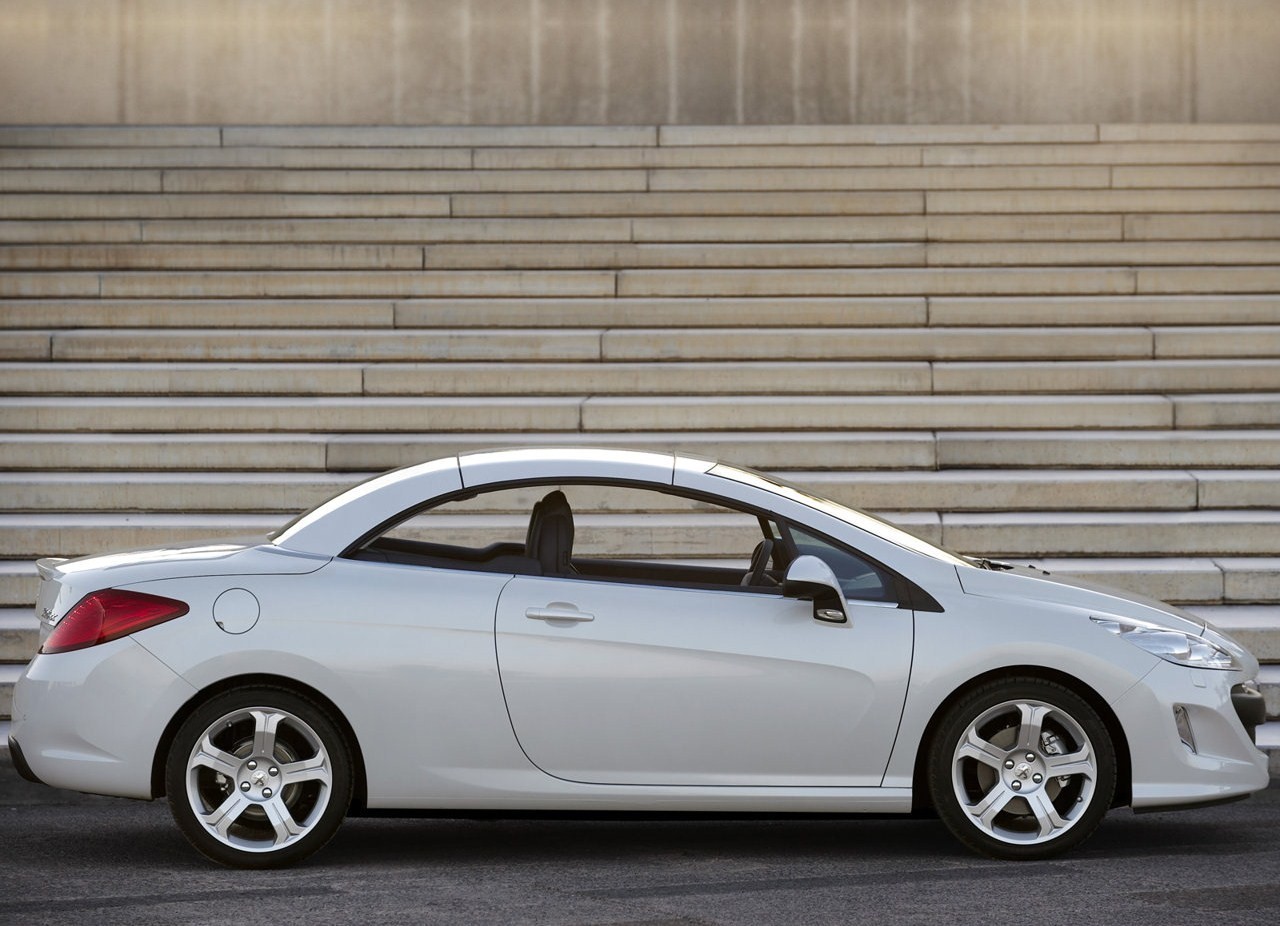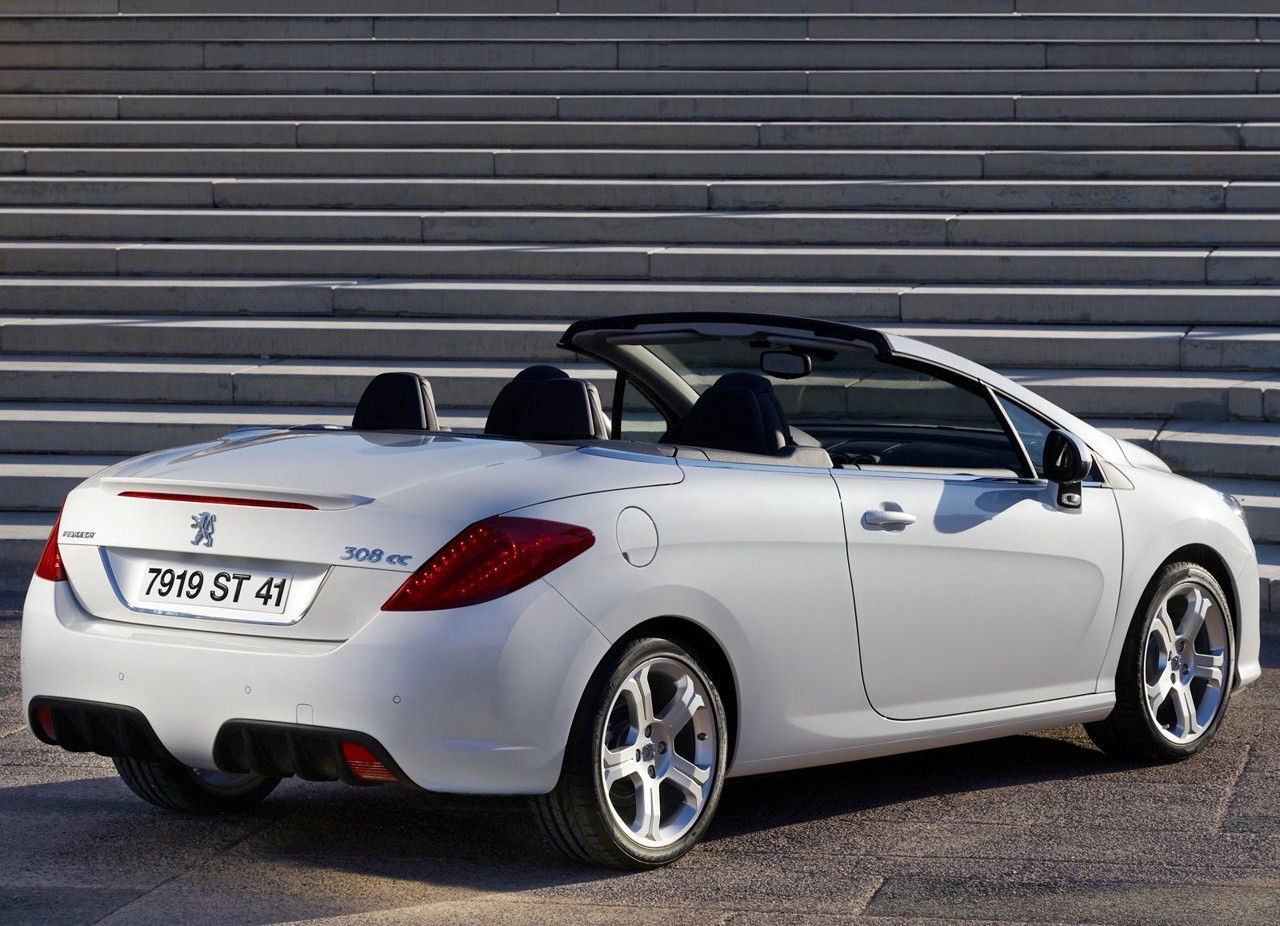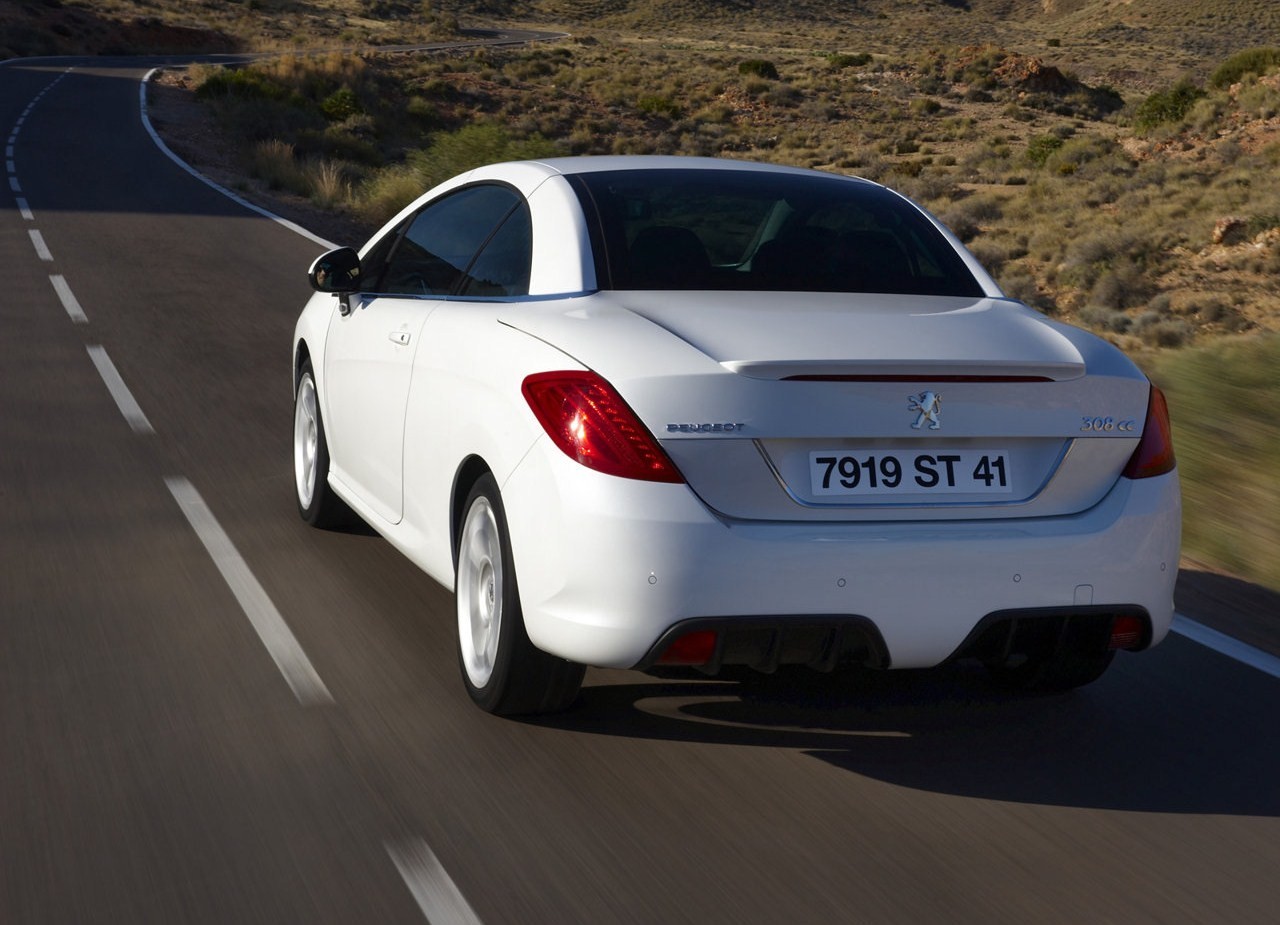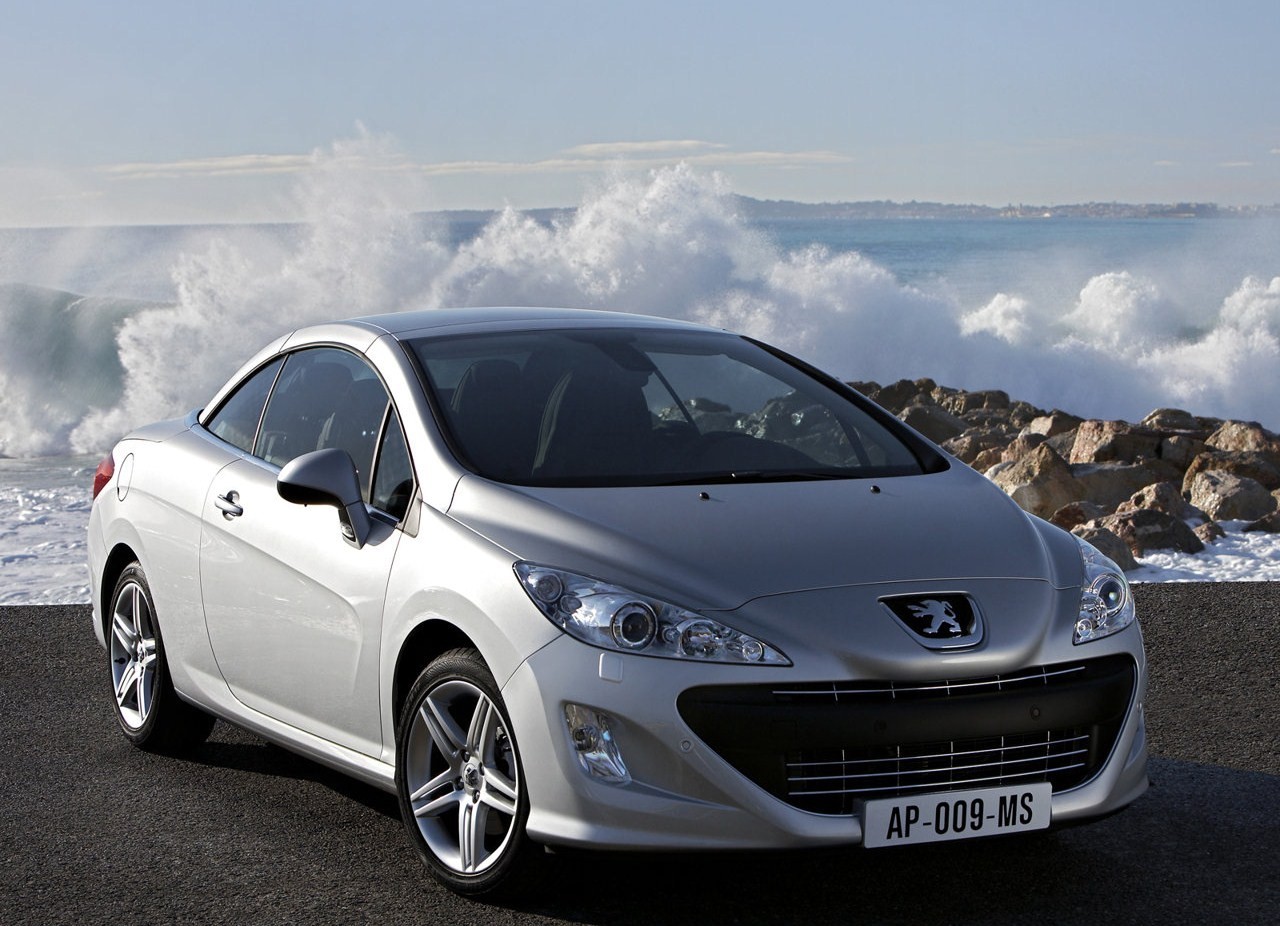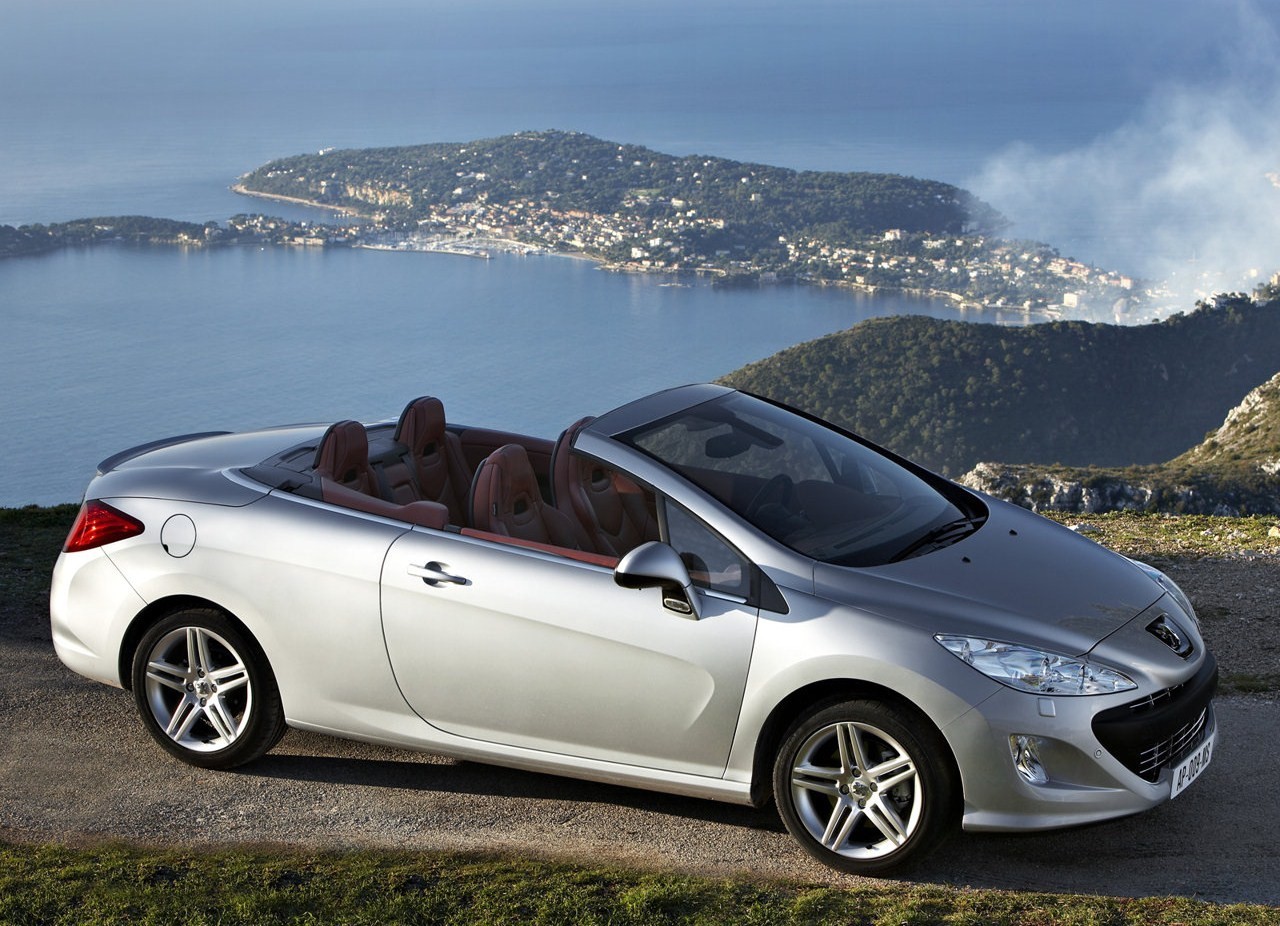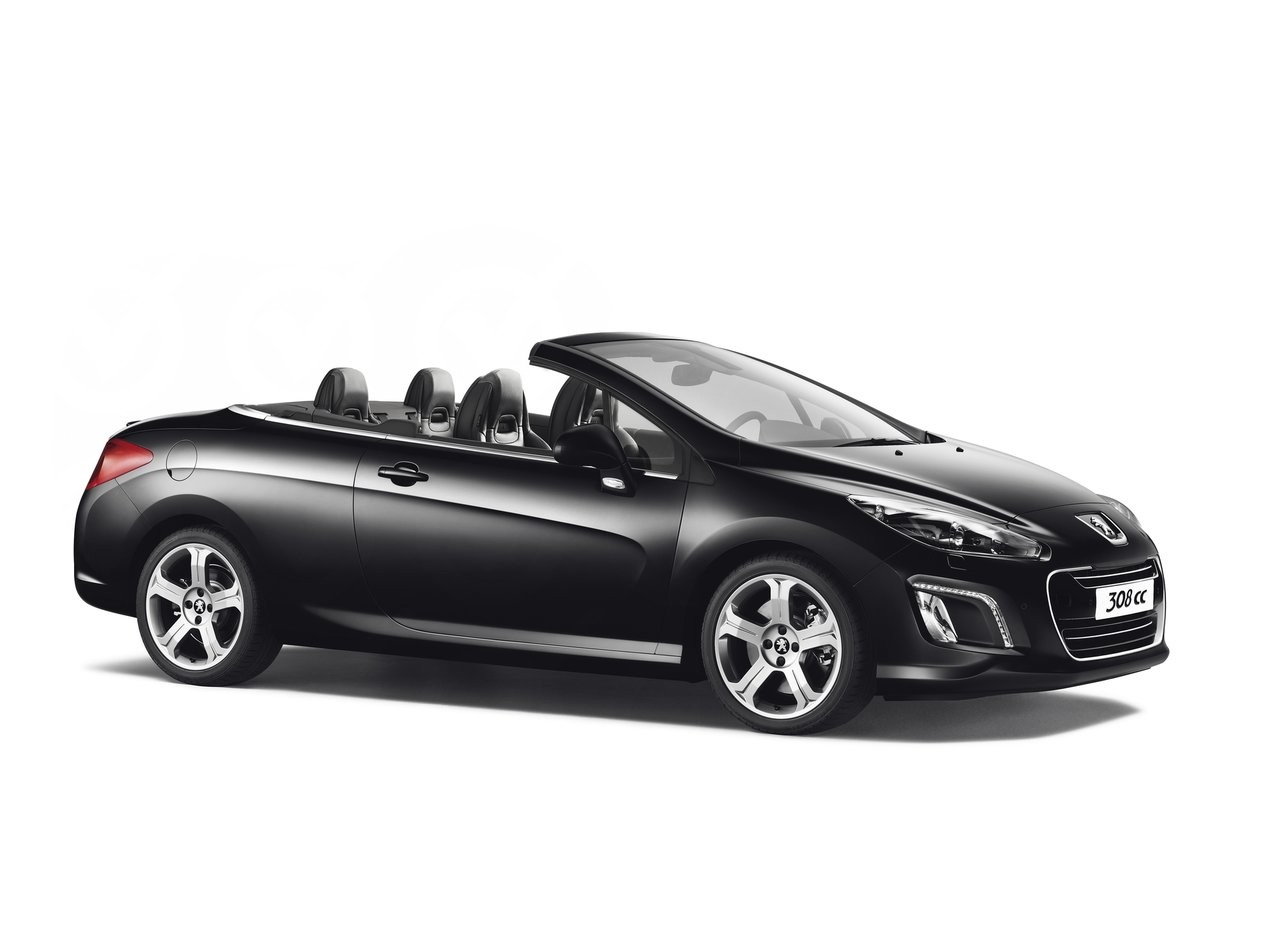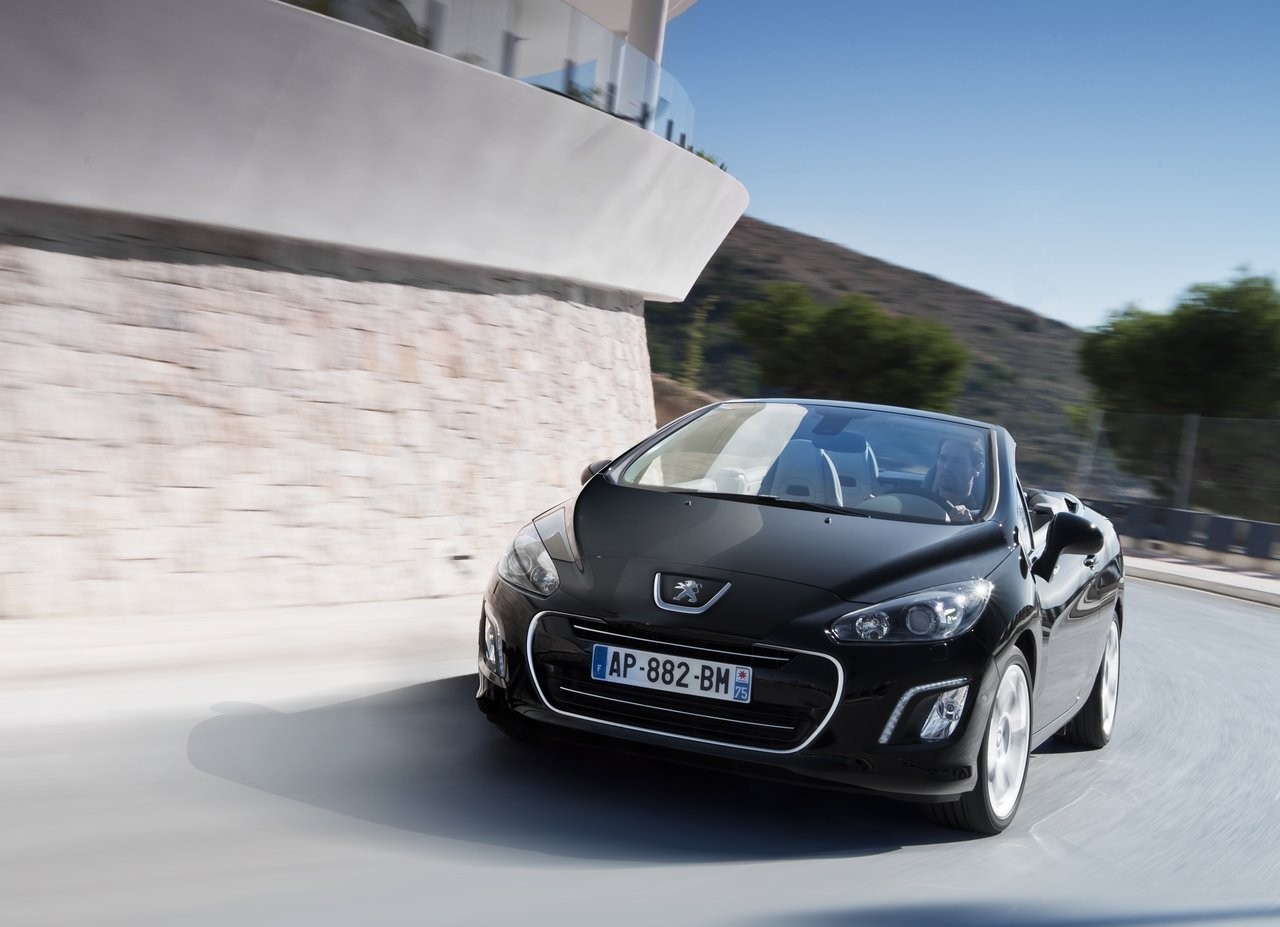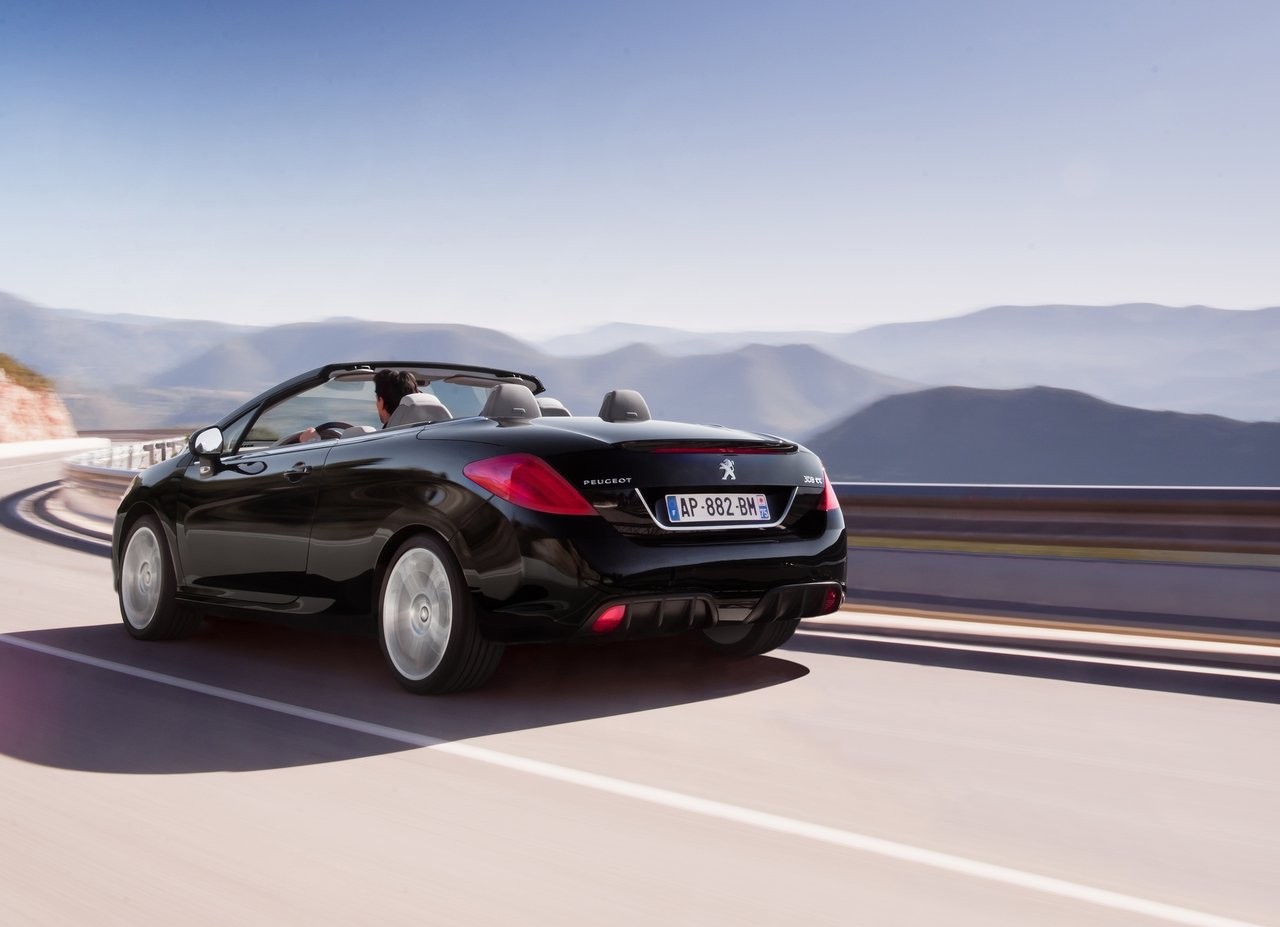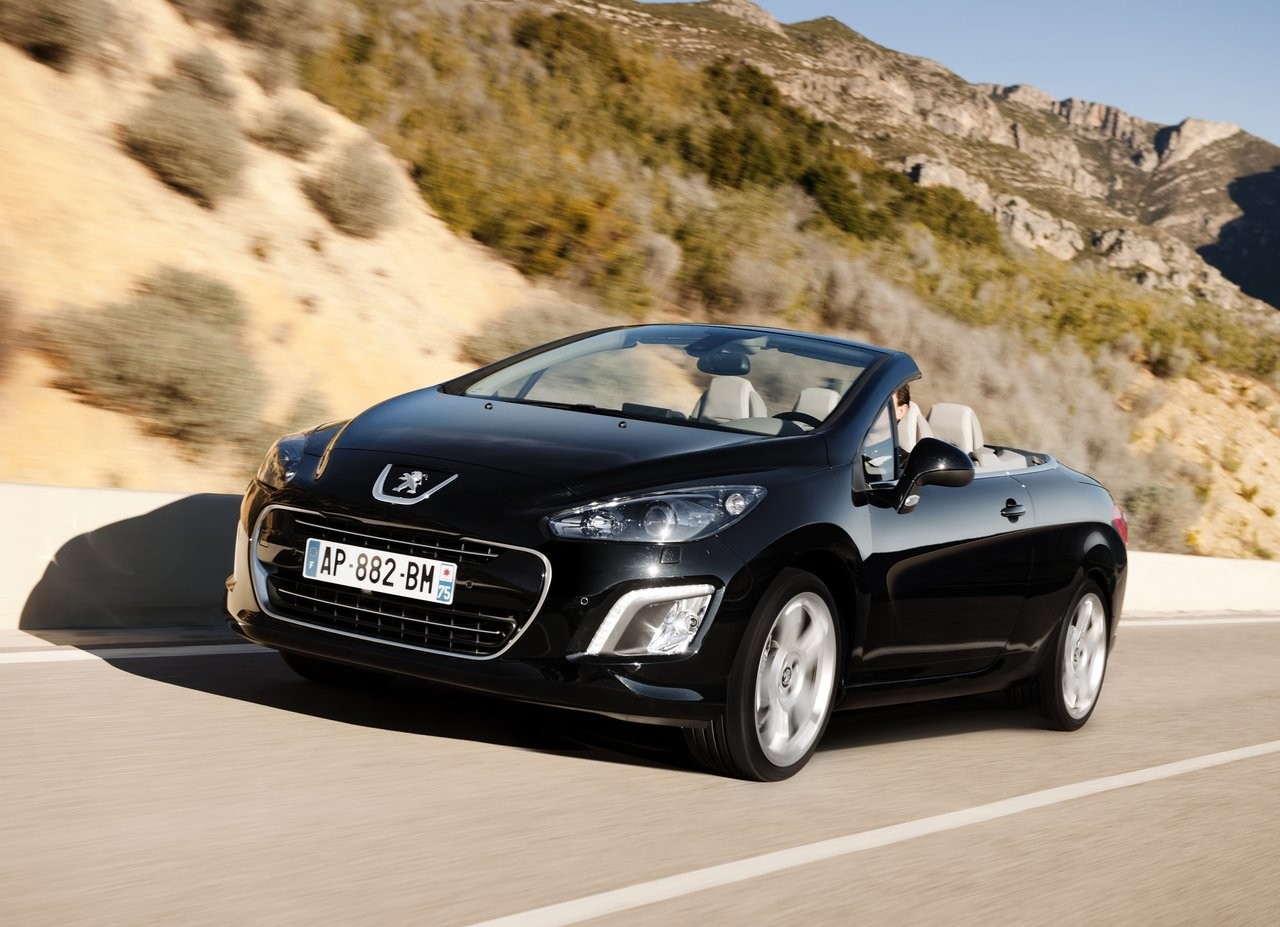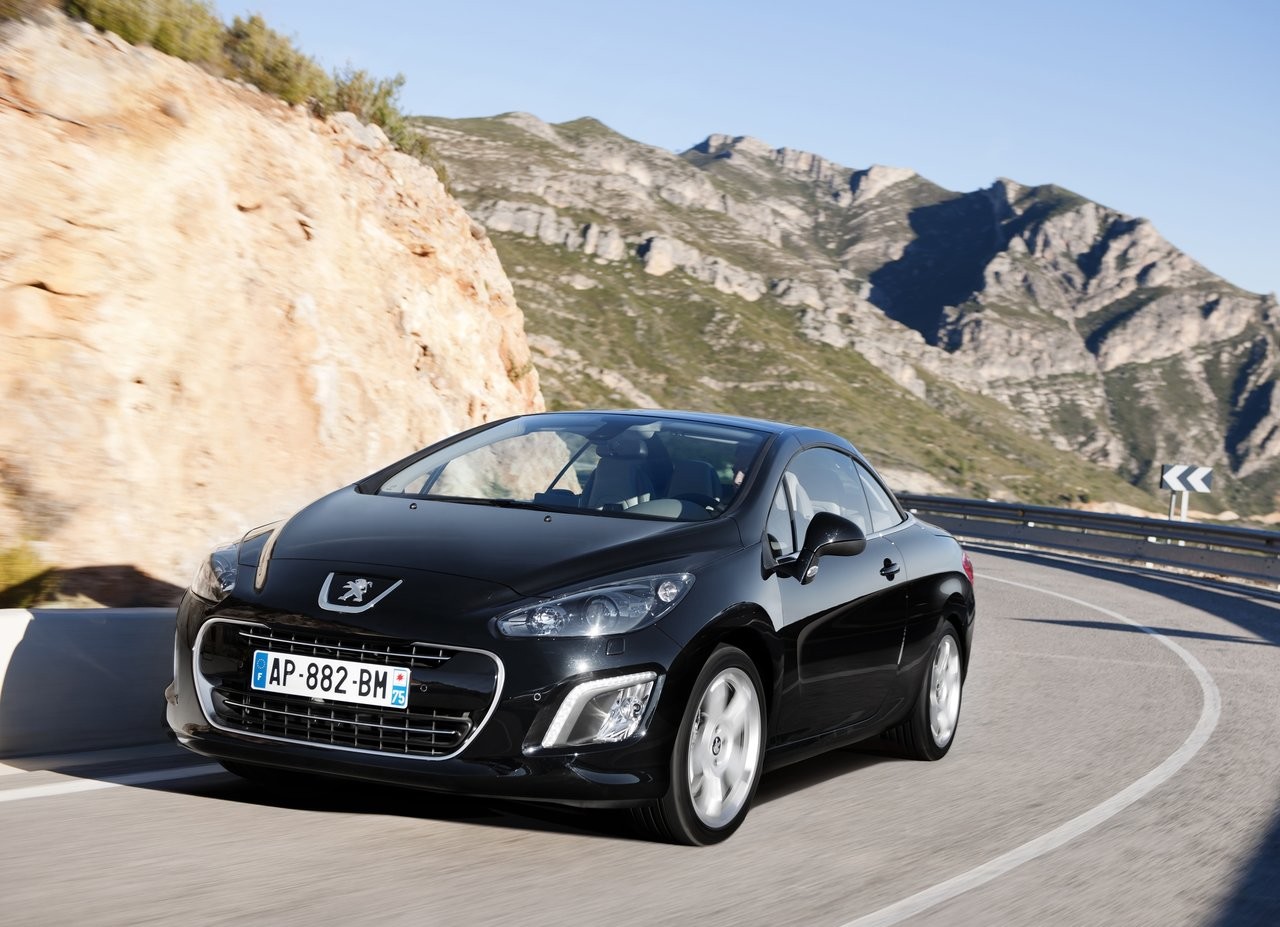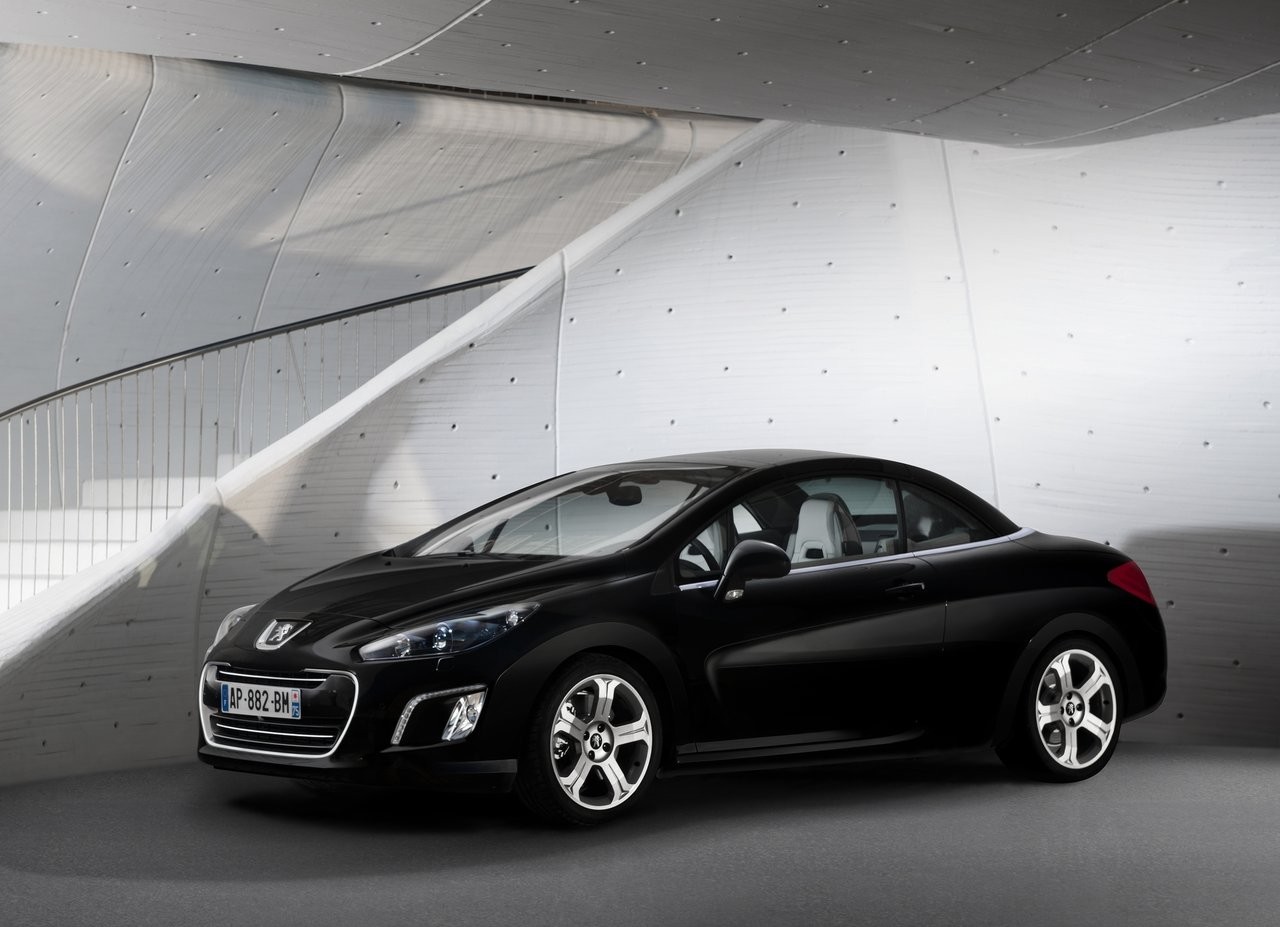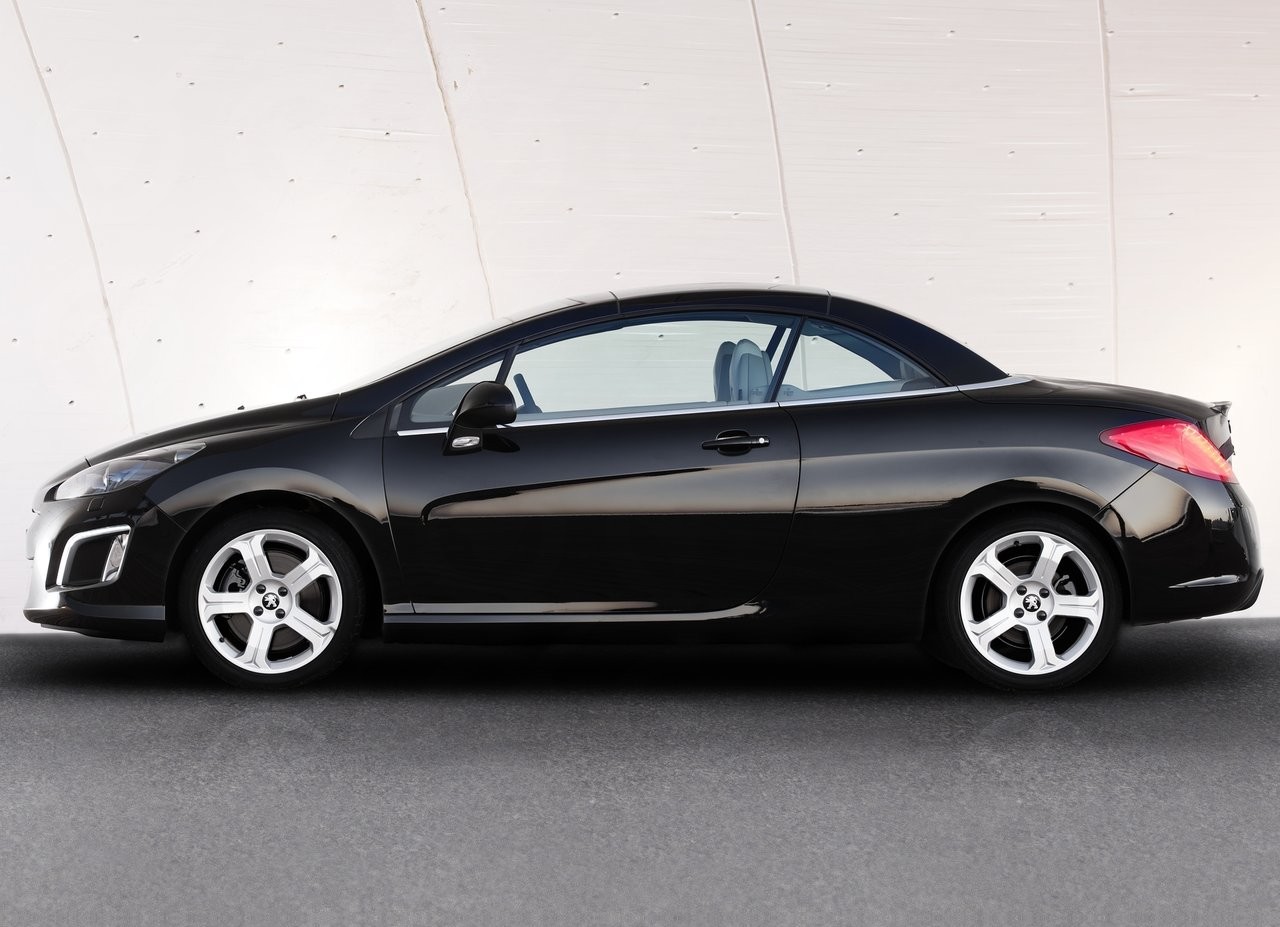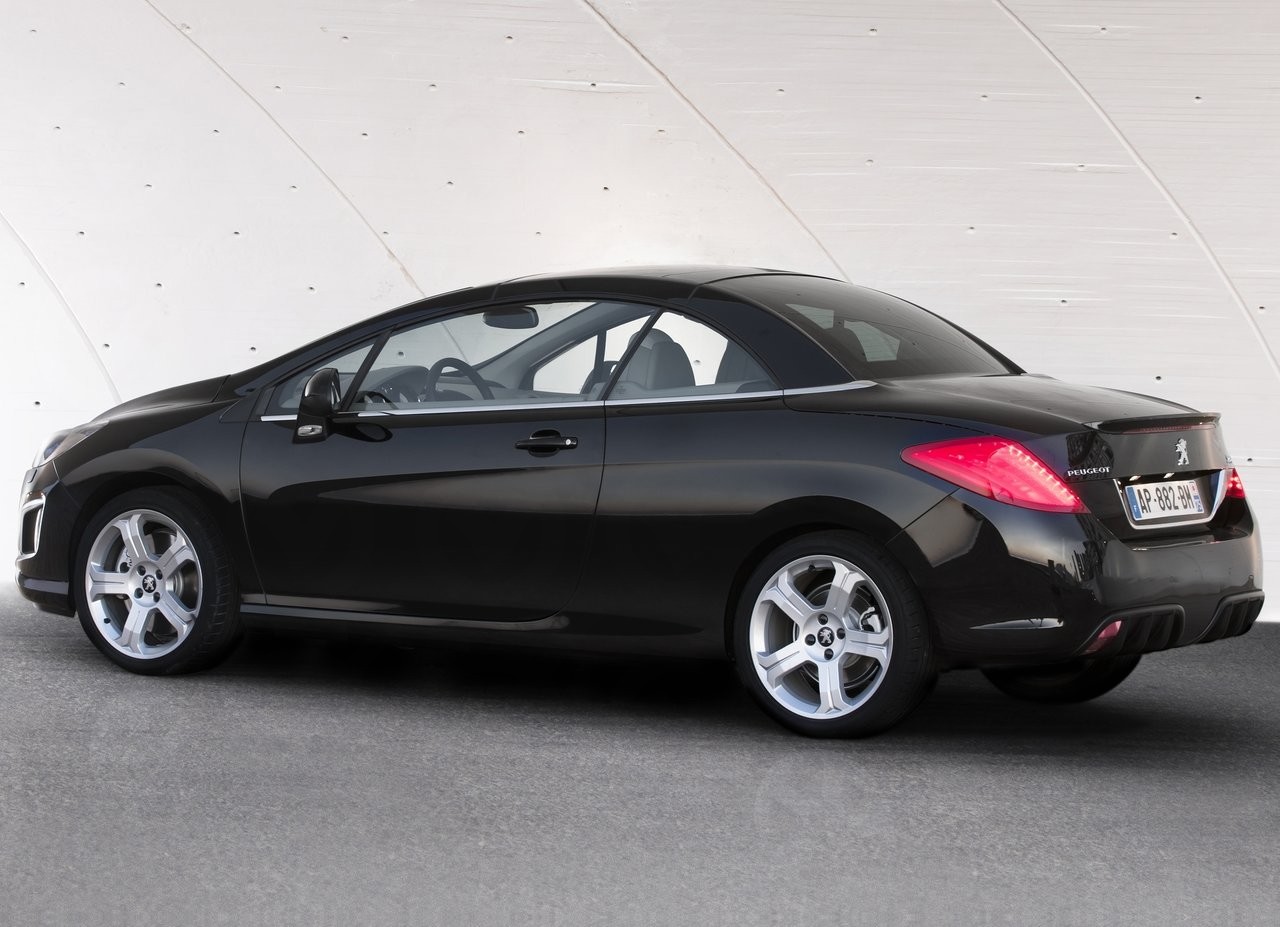
- Clexible 1.6-litre turbo petrol engine
- Responsive and economical 2.0-litre turbo-diesel engine
- Open-top appeal
- Suspension lacks compliance , especially with 18-inch wheels
- Steering lacks feel
- Forward sloping front seats
- Cramped rear seats
- Poor rear visibility with roof up
Review: Peugeot T7.I 308 CC (2009-11)
Overview
Released in July 2009, the Peugeot T7 Phase I (T7.I) 308 CC was a two-door convertible with a retractable hardtop roof. Manufactured in France, the front-wheel drive 308 CC was available with two engines: a 1.6-litre four-cylinder turbocharged petrol engine and a 2.0-litre four-cylinder turbo-diesel engine.
EP6DT and DW10B engines
Of the engines,
- the 1.6-litre EP6DT petrol engine was developed with BMW and featured direct petrol injection, low-pressure die-cast cylinder heads, a twin-scroll turbocharger, double overhead camshafts and four valves per cylinder; and,
- the 2.0-litre DW10B diesel engine had a variable geometry turbocharger, common-rail direct injection, an intercooler, double overhead camshafts and four valves per cylinder.
Petrol engines were initially offered with four-speed automatic transmissions, while diesel engines had a six-speed unit.
Dimensions and suspension
Compared to the Peugeot 307 CC , the 308 CC was 229 mm longer (at 4440 mm), 60 mm wider (1817 mm) and 103 mm lower (1427 mm), though wheelbase length was unchanged (2608 mm). Furthermore, the 308 CC’s fully automatic, retractable roof could be raised or lowered in 20 seconds.
The 308 CC had pseudo MacPherson type front struts, a torsion beam rear axle and electrohydraulic power steering.
March 2010 updates
In March 2010, a six-speed automatic transmission was introduced for the turbocharged petrol engine and, in October 2010, the HDi engine was upgraded for Euro V emissions compliance and produced greater power and torque.
| Variant | Engine | Edition | Trans. | Years | Peak power | Peak torque |
|---|---|---|---|---|---|---|
| 1.6 Turbo | 1598 cc EP6DT turbo petrol I4 | [N/A] | 4sp auto | 2009-10 | 110 kW at 6000 rpm | 240 Nm at 1400 rpm |
| 6sp auto | 2010-11 | |||||
| 6sp man | 2009-11 | |||||
| S | 4sp auto | 2009-10 | ||||
| 6sp auto | 2010-11 | |||||
| 2.0 HDi | 1997 cc DW10B turbo-diesel I4 | [N/A], S |
6sp auto | 2009-10 | 100 kW at 4000 rpm | 320 Nm at 2000 rpm |
| 1997 cc DW10C turbo-diesel I4 | [N/A], S |
6sp auto | 2010-11 | 120 kW at 3750 rpm | 340 Nm at 2000 rpm |
Safety equipment
Standard safety equipment for the 308 CC included dual front airbags, front seat-mounted side airbags, head protecting airbags mounted in the front head restraints, ABS, electronic brake force distribution, brake assist, traction control, electronic stability control, automatically deploying rollover bars and front seatbelts with pretensioners and load limiters.
Euro NCAP testing
In Euro NCAP testing , a 308 CC with a 1.6-litre petrol engine received a five star adult occupant protection rating with a score of 35.87 out of 37, a result which was adopted by ANCAP . In the frontal offset crash test, there was a slight risk of serious chest and leg injury for the front occupants. In the pole tests, rib deflection readings indicated marginal protection of the chest. Under Euro NCAP’s updated testing regime , the 308 CC was subsequently awarded a five star safety rating which included an 83 per cent adult occupant protection rating and a 70 per cent child occupant protection rating.
Features: 308 CC and S
Standard features for the Peugeot 308 CC included 17-inch alloy wheels, a six speaker sound system with a CD player, dual-zone climate control air conditioning, cruise control, front and rear fog lamps, automatic headlights, rain-sensing wipers, rear parking sensors, a cooled glovebox, remote central locking, power windows and folding mirrors, tilt and telescopic steering wheel adjustment, height adjustable front seats, a 12 volt power outlet, tinted windows, a trip computer and an immobiliser.
The Peugeot 308 CC S was differentiated by its 18-inch alloy wheels, leather seats, power adjustable and heated front seats with memory settings for the driver’s seat, Airwave (neck heating), front parking sensors, directional bi-xenon headlights, wind deflector and tyre pressure sensors.
Related links
Review: Peugeot T7.II 308 CC (2011-14)
Overview
Released in August 2011, the T7 Phase II (T7.II) 308 CC introduced a revised range and a chassis with an increased proportion of high strength steel (and multi-layer reinforcements) for a stronger and lighter structure. The 308 CC range consisted of solely of ‘Allure’ editions which were available with either a 1.6-litre turbocharged petrol engine or a 2.0-litre turbo-diesel unit (see table below).
Visually, the T7.II 308 CC could be identified by its redesigned V-shaped bonnet (with the Peugeot badge at its tip), ‘smooth glass’ front headlights, daytime LED running lights and ruby-coloured LED rear lights with a ‘light curtain’ effect. Inside, the dashboard was sloped for greater visibility while higher quality and soft-touch materials were more prevalent.
| Variant | Engine | Edition | Trans. | Peak power | Peak torque |
|---|---|---|---|---|---|
| 1.6 Turbo | 1598 cc EP6CDT turbo petrol I4 | Allure | 6sp man., 6sp auto |
115 kW at 6000 rpm | 240 Nm at 1400 rpm |
| 2.0 HDi | 1997 cc DW10C turbo-diesel I4 | Allure | 6sp auto | 120 kW at 3750 rpm | 340 Nm at 2000 rpm |
Safety equipment
Compared to its T7.I predecessor, standard safety equipment for the T7.II 308 CC was unchanged.
Features
Standard features for the T7.II 308 CC included 17-inch alloy wheels, a six speaker sound system with a CD player and auxiliary inputs (3.5mm/USB), dual-zone climate control air conditioning with neck-level heating (‘Airwave’), power adjustable and heated front seats with driver’s seat memory settings, leather seats, Bluetooth connectivity, front and rear fog lights, automatic headlights, rain-sensing wipers, a cooled glovebox, a leather-wrapped steering wheel with audio controls, remote central locking, power windows and mirrors (with heating and folding functions), a tilt and reach adjustable steering column, wind deflector, 12 volt power outlets, tinted windows, a trip computer and an immobiliser.
Brochure
Related links
- Specifications: Peugeot T7.II 308 CC (January 2014)
- Peugeot Automobiles Australia: Peugeot 308 CC
- Wikipedia.org: Peugeot T8 308
